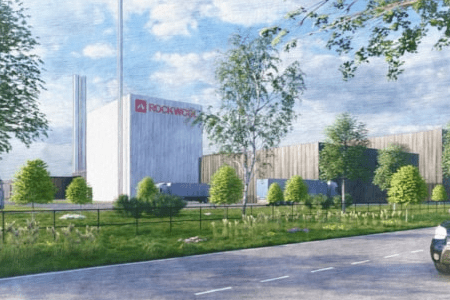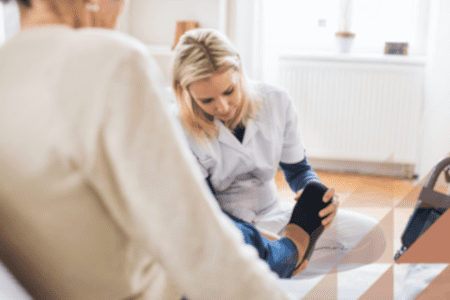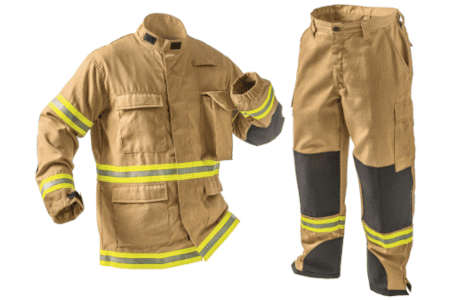In 2005-2009, there were an average of 15,700 reported structure fires in high-rise buildings per year and associated losses of 53 civilian deaths, 546 civilian injuries, and $235 million in direct property damage per year. Four property classes account for roughly half of high-rise fires: office buildings, hotels, apartment buildings, and facilities that care for the sick. Automatic fire protection equipment and fire-resistive construction are more common in high-rise buildings that have fires than in other buildings of the same property use that have fires. The risks of fire, fire death, and direct property damage due to fire tend to be lower in high-rise buildings than in shorter buildings of the same property use.
In 2005-2009, an estimated 15,700 reported high-rise structure fires per year resulted in associated losses of 53 civilian deaths, 546 civilian injuries, and $235 million in direct property damage per year. An estimated 2.6% of all 2005-2009 reported structure fires were in high-rise buildings.
The trends in high-rise fires and associated losses (inflation-adjusted for property damage) are clearly down, but the sharp post-1998 reduction appears to be mostly due to the change to NFIRS Version 5.0, which is shifting estimates to lower levels that also appear to be more accurate.
Four property classes account for roughly half of high-rise fires: apartments, hotels, facilities that care for the sick, and offices. In 2005-2009, in these four property classes combined, there were 7,800 reported high-rise structure fires per year and associated losses of 30 civilian deaths, 352 civilian injuries, and $99 million in direct property damage per year. The property damage average is inflated by the influence of one 2008 hotel fire, whose $100 million loss projected to nearly $40 million a year in the analysis.
This report emphasises these four property classes. Some other property uses – such as stores and restaurants – may represent only a single floor in a tall building primarily devoted to other uses. Some property uses – such as grain elevators and factories – can be as tall as a high-rise building but without a large number of separate floors or stories.
For these reasons, the four property use groups listed above define most of the buildings we think of as high-rise buildings, and their fires come closest to defining what we think of as the high-rise building fire problem.
By most measures of loss, the risks of fire and of associated fire loss are lower in high-rise buildings than in other buildings of the same property loss. This statement applies to risk of fire, civilian fire deaths, civilian fire injuries, and direct property damage due to fire, relative to housing units, for apartments, and risk of fire for hotels, offices, and facilities that care for the sick.
The usage of wet pipe sprinklers and fire detection equipment is higher in high-rise buildings than in other buildings, for each property use group. Even so, considering the extensive requirements in NFPA 101®, Life Safety Code, for fire and life safety features in both new and existing high-rise buildings, it seems clear that there are still major gaps, particularly in adoption and enforcement of the provisions requiring retrofit of automatic sprinkler systems and other life safety systems in existing high-rise buildings. NFPA 1®, Fire Code, has sprinkler retrofit requirements.
This has implications for public officials and ordinary citizens in any city. Public officials should make sure that the latest editions of NFPA 1®, Fire Code, and NFPA 101®, Life Safety Code, are in place and that the codes they have are supported by effective code enforcement provisions, including plan review and inspection processes, both for new construction and for continued supervision of code compliance in existing buildings. The public can take responsibility for their own safety by insisting that their public officials take these steps. As in so many areas of fire safety, we know what to do, but we still need to do it.
The trend had been toward a smaller share of fires being reported each year as occurring in buildings with fire-resistive construction, both for high-rise and other buildings, with the decline being most dramatic in facilities that care for the sick. This statistical decline could reflect any or all of the following:
(a) a shift in construction between the two types permitted by codes, from Type I (442 or 332) construction, which is coded as fire-resistive, to Type II (222) construction, which is coded as protected non-combustible;
(b) a shift to acceptable alternative designs using more sprinklers and less fire-resistive construction; or
(c) enough success in containing fires that a rising fraction never are reported to fire departments, because the fires are caught and controlled so early by occupants.
Most high-rise building fires begin on floors no higher than the 6th story. The fraction of 2005- 2009 high-rise fires that began on the 7th floor or higher was 32% for apartments, 22% for hotels and motels, 21% for facilities that care for the sick, and 39% for office buildings. The risk of a fire start is greater on the lower floors for apartments, hotels and motels, and facilities that care for the sick, but greater on the upper floors for office buildings.
High-rise apartments have a slightly larger share of their fires originating in means of egress than do their shorter counterparts (4% vs. 3%). The same is true of hotels (7% vs. 5%) and facilities that care for the sick (6% vs. 4%). In offices (4% vs. 6%), the differences in percentages are in the opposite direction, which means that high-rise buildings in those properties have a smaller share of their fires originating in means of egress. In all four property classes, the differences are so small that one can say there is no evidence that high-rise buildings have a bigger problem with fires starting in means of egress.
U.S. high-rise building fires fact sheet
In 2005-2009, U.S. fire departments responded to an average of 15,700 structure fires in high-rise buildings. These fires caused an annual average of:
- 53 civilian fire deaths
- 546 civilian fire injuries
- $235 million in direct property damage
- Four property use groups account for roughly half of high-rise fires:
- Apartments (44% of all high-rise fires, 55% of deaths, 18% of damages)
- Hotels (2% of high-rise fires, 2% of deaths, 21% of damages)
- Facilities that care for the sick (2% of high-rise fires, 0% of deaths, 1% of damages)
- Offices (2% of high-rise fires, 0% of deaths, 2% of damages)
The rest were nearly all property uses found in mixed-use residential or office buildings (such as restaurants, stores, and parking garages) or probable miscodes of properties that cannot be high-rise (such as dwellings and sheds)
By most measures, the risks of fire and of associated losses are lower in high-rise buildings than in other buildings of the same property use.
A major reason why risks are lower is probably the much greater use of fire protection systems and features2 in high-rise buildings as compared to shorter buildings.
Further evidence of greater impact from fire protection systems and features in highrise buildings is in percentage of fires with flame damage beyond room of origin:
- Apartments (7% of high-rise fires vs. 10% in shorter buildings)
- Hotels (7% of high-rise fires vs. 10% in shorter buildings)
- Facilities that care for the sick (16% of high-rise fires vs. 19% in shorter buildings)
- Offices (4% of high-rise fires vs. 7% in shorter buildings)
What is a high-rise?
Paragraph 3.3.36.7 of NFPA 101®, Life Safety Code, 2012 edition, defines a high-rise building as a building more than 75 feet (23 meters) in height, measured from the lowest level of fire department vehicle access to the floor of the highest occupiable story. A height of 75 feet translates into roughly seven stories.
The number of stories was first captured in U.S. national fire incident coding in Version 4.0 of the National Fire Incident Reporting System (NFIRS). This version was in widespread use by 1985. Version 5.0, introduced in 1999, provides separate coding for the total number of stories and the number of stories above and below ground. In keeping with the definition in NFPA 101®, Life Safety Code, a height above ground of seven or more stories is used to define high-rise from 1999 on.
Prior to 1999, the National Fire Incident Reporting System (NFIRS) coded building height in ranges, including four that may be considered high-rise: 7-12 stories, 13-24 stories, 25-49 stories, and 50 stories or more.
Is there more or less fire-related risk in a high-rise building?
By most measures of loss, the risks of fire and of associated fire loss are lower in high-rise buildings than in other buildings of the same property uses. This statement applies to risk of fire, civilian fire deaths, civilian fire injuries, and direct property damage due to fire, relative to housing units, for apartments, and risk of fire for hotels, offices, and facilities that care for the sick. Statistics on the U.S. building inventory by height of building are scarce and not ideally suited to calculations of relative fire risk, but some analysis is possible.
The best data is on apartment buildings. Statistics are published on U.S. housing units in every odd-numbered year. In 2005-2009, an average of 8-11% of occupied year-round housing units were in apartment buildings defined as buildings with 3 or more housing units. The percentage range is necessary because the data on housing combines housing units in 2-unit buildings with housing units in buildings having 3-4 housing units. (In NFIRS coding, buildings with one or two housing units are grouped together and not called apartments.) If most buildings with 2-4 housing units are in 2-unit buildings, then the high-rise share of apartments is close to 11%. If most buildings with 2-4 housing units are not in 2-unit buildings, then the high-rise share of apartments is close to 8%. Risk can be calculated as fires (or fire loss) per million housing units (or per million buildings, per million occupants, or per billion square feet). Risk is therefore a ratio of a measure of fire loss to a measure of units of exposure, where “exposure” refers to people, space, or value exposed to potential harm if fire occurs.
In 2005-2009, 6% of apartment fires were in high-rise buildings. Because 6% falls below the 8-11% range, the risk of fire in a high-rise apartment building is lower than in an apartment building that is not a high-rise.
Also in 2005-2009, high-rise buildings accounted for 7% of civilian deaths in apartment fires, 8% of civilian injuries in apartment fires, and 3% of direct property damage in apartment fires. (See Table 2A.) For all these loss measures, the risk is lower (or as low, for injuries) in a high-rise apartment than in other apartments.
For the other three property classes, other data must be used, and it is necessary to measure exposure by square feet rather than number of buildings or housing units. The U.S. Energy Information Administration publishes figures (latest from 2003; data from the 2007 survey did not support valid estimates and was not published) on floor space for properties with defined ranges of square feet of floor space.3 Breakdowns are available by defined ranges of number of stories or by principal economic activity in the building, but not by both simultaneously.
For direct property damage, the high-rise share was 40% for hotels, 8% for facilities that care for the sick, and 4% for offices. Except for hotels, these are all well below the corresponding ranges for high-rise share of square footage, indicating a clearly lower risk of property damage in high-rise buildings compared to other buildings, for offices and facilities that care for the sick. The hotel percentage is distorted by the effect of a single 2008 fire in a 32-story hotel with $100 million in loss.
Fire protection in high-rise buildings
NFPA 101®, Life Safety Code has for decades had provisions for existing as well as new high-rise buildings. Where NFPA 101®, Life Safety Code, is adopted into law or otherwise followed in practice, these required practices should be in place.
In NFPA 101®, Life Safety Code, 2012 edition, section 11.8 contains requirements potentially applicable to a high-rise building. The chapter for a particular occupancy determines whether all or some of the requirements are required for that occupancy and determines whether the requirements are for new or existing buildings.
Among the section requirements are an approved supervised automatic sprinkler system; a Class I standpipe system; a fire alarm system with an approved emergency voice/alarm communication system; two-way telephone service for fire department use; emergency lighting; standby power; and an emergency command centre.
Existing high-rise hotels must be protected throughout by an approved supervised automatic sprinkler system.
Existing high-rise health care occupancies must be Type I or Type II construction (as must existing health care occupancies 4-6 stories in height). This corresponds to the “fire resistive” construction type category previously used in NFIRS as well as a subpart of the “protected noncombustible” category. A provision added to the code in 2009 and modified in the 2012 edition requires existing high-rise hospitals to be protected with automatic sprinklers within a nine-year period. Since 2006, the code has required all nursing homes, regardless of height, to be protected with automatic sprinklers.
Existing high-rise apartment buildings are required to have an approved supervised automatic sprinkler system, installed throughout, with two exceptions. One is if every living unit has exterior exit access in accordance with section 7.5.3; the other is if the building has an «approved, engineered life safety system» in accordance with section
31.3.5.11.4. The latter exception for an engineered life safety system, is also the only exception to the requirement for a complete, approved, supervised automatic sprinkler system in existing high-rise office buildings. NFPA 1®, Fire Code, requires sprinkler retrofitting in all high-rise buildings.
Table 4 provides statistics on percentage of fires with fire protection present for three types of fire protection for three groups of years (1986-19894, 1994-1998, and 2005-2009):
Automatic extinguishing equipment. In 2005-2009, partial systems and equipment other than wet-pipe sprinklers can be identified and have been excluded. This refinement of the statistics is partly to mostly responsible for the drops in fires reported with equipment present.
Fire detection equipment
Fire resistive construction. Type of construction is no longer collected and is not available for 2005-2009.
The defined construction types can be briefly summarised by these major characteristics:
- Fire resistive – Concrete or fire-resistant-covered steel construction rated for 2 hours;
- Heavy timber – Construction where any exposed wood load-bearing members has no dimension less than 2 inches;
- Protected non-combustible – Concrete or fire-resistant-covered steel construction rated for 1 hours;
- Unprotected non-combustible – Exposed steel construction without fire-resistant covering;
- Protected ordinary – Masonry load-bearing walls with columns, wood floors, and roof decks all protected by fire-resistive coating rated for 1 hour;
- Unprotected ordinary – Masonry load-bearing walls with exposed columns, wood floors, and roof decks without fire-resistive coating;
- Protected wood frame – Wood frame construction with wall and ceiling surfaces protected by fire-resistive covering, such as gypsum board; and
- Unprotected wood frame – Wood frame construction without fire-resistive covering.
From 1999 on, there is an option to report fires as confined fires, in which case very little detail is required. This change encourages the reporting of very small fires, but introduces a high degree of uncertainty in the analysis of detailed characteristics of those fires.
www.nfpa.org








